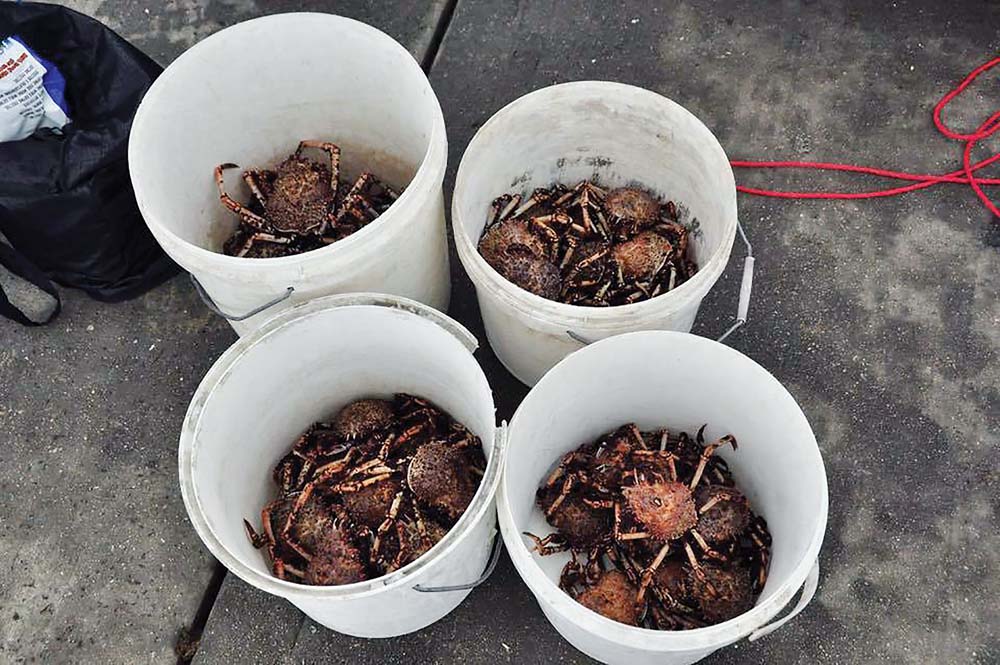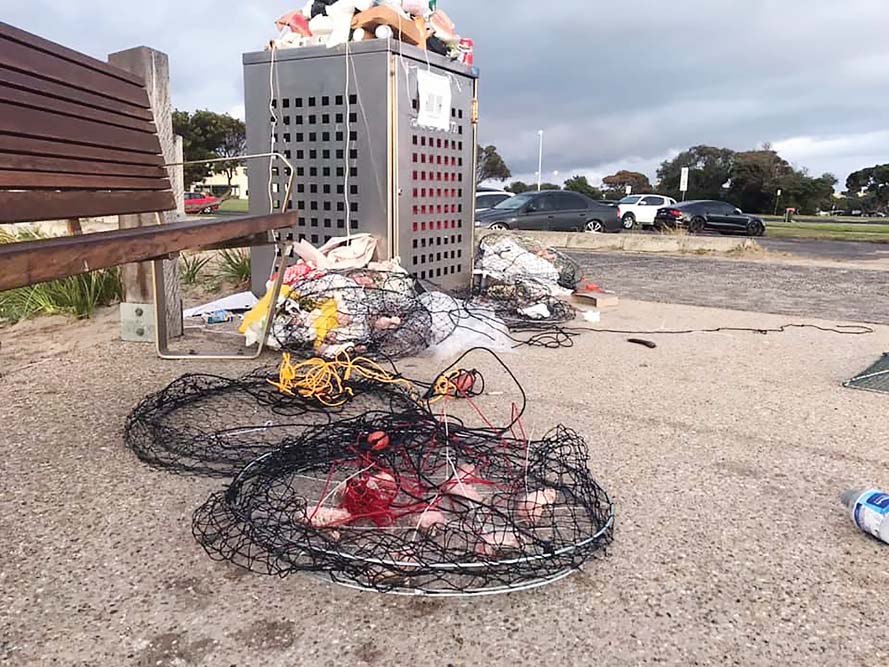By Zoe McKenzie

MANY Mornington Peninsula residents look forward to the annual mid-year arrival of tens of thousands of spider crabs around Rye, Blairgowrie and Sorrento piers.
Around the full moon in June, masses of the slightly creepy, tall, brown, Australian giant spider crabs march into the southern peninsula shallows.
No one really knows why they like this area so much, but we know what happens when they arrive. They gather in giant mounds and, using the safety of numbers, throw off their hard shells and grow new ones.
The creatures that gather to feed on those who find themselves perched precariously at the mound’s top or edge are astounding: rays, sharks, fish and seabirds.
The resulting feast is one of the best underwater shows near any Australian shore.
The annual performance is so great that renowned broadcaster and naturalist Sir David Attenborough covered it in his 2017 Blue Planet II TV series.
Together with the weedy seadragons at Portsea and Flinders, the exuberant array of nudibranchs at Blairgowrie pier and seahorses at Rye, the spider crab migration is putting the peninsula on the “must do” list of national and international scuba divers and snorkelers.

Not known for being tasty, it was a surprise when fishers appeared on the piers to catch the crabs in 2019, followed by even greater numbers in 2020.There was an unsteady peace between those who came down to watch and enjoy the spectacle and the fishers who threw chicken carcasses and sometimes bricks into their crab nets.
This year, because of the COVID-19 pandemic, a dangerous absence of social distancing led to the piers being closed.
Even so, the usual fortnight of sea-wonder was done and dusted within days, the crabs gone, sea life on the pier pylons damaged by nets and the seabed, pier and car park left littered with debris.
There are few locals who support the crab fishing and more than 34,000 signatures have been added to a petition started in 2019 calling for a no-take season to protect the crabs during their most vulnerable time.
On 16 September, the Victorian Fisheries Authority released a proposal to reduce the permitted catch from 30 crabs a day to 15. This would normally be good news, but further examination reveals it is designed to achieve no change.
The proposal followed a VFA survey on WeChat, the Chinese-language social media platform. The survey received 306 responses, 195 from people who said they caught the crabs (90 per cent caught less than 20). In the VFA’s own words, the new bag limit is “not designed to reduce the catch”.
The VFA has shown no intention of spending the necessary money to educate fishers and enforce the new limit.
Requests for the state government to rethink this approach have fallen on deaf ears.
Spider Crabs Melbourne and Spider Crab Alliance have been working with local businesses, education and tourism bodies, as well as Mornington Peninsula Shire and MPs to increase tourism and economic activity around this winter event.
One option is a spider crabs festival, celebrating the diversity of the peninsula’s waters, food and wine, walking trails, boat-based fishing, diving and dolphin watching and hot springs. The aim is to bring people to the peninsula for a few days in the depths of winter, a better economic outcome than crab-fishers who spent an average $60 on their day trip.
A similar festival in Whyalla for the cuttlefish aggregating season draws more than 6000 visitors, offers school and citizen science programs, marine art, dolphin research and shorebird counts (“Festival to link crabs with cuttlefish” The News 31/8/20).
This year’s CuttleFest saw visitors spend $17 million.
The VFA’s move, if successful, undermines the crab festival plans and its economic potential. Consultation closes 27 October.
First published in the Southern Peninsula News – 6 October 2020



